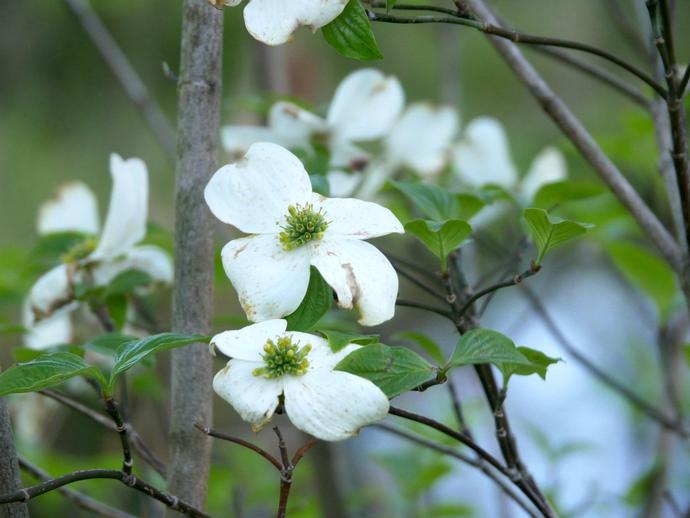December 22, 2020
Ben is taking a well-deserved holiday vacation, so we're reaching into the archives for today's #BenInNature update! The following post was originally published on April 28, 2020.
This tree should certainly be a familiar sight to Virginia residents! The flowering dogwood (Cornus florida) is both the state tree and the state flower of Virginia. Speaking on a strictly technical level, however, the dogwood's flower isn't what we generally think it is. The four white petals aren't petals at all; they're structures called "bracts," which are modified leaves that surround the actual flowers. The flowers themselves are the tiny greenish-yellow things in the center of the bracts. Another example of this is the poinsettia plant; the bright red "flowers" of the poinsettia are bracts as well. So the next time someone comments on the beautiful white flowers of your dogwood tree, you too can pedantically correct them!
The flowering dogwood is a fairly common tree which can be found throughout much of the eastern half of the U.S. They are typically found at the edges of forests, and they bloom in April here in Virginia (they bloom a bit later in the more northern parts of their range). The bright red fruits that flowering dogwoods produce are a type of drupe, which is a fruit that has a single hard seed surrounded by a fleshy skin (peaches are also a kind of drupe). While these fruits aren't poisonous to humans, according to braver folks than me, they are unspeakably sour and disgusting.
Given their beauty, dogwoods are a popular ornamental tree. While the flowering dogwoods you'll find out in the woods will generally have white bracts, there are a variety of cultivars with pink or red bracts that you might spot at your local park or in your neighbor's front yard. If you'd like to add some trees to your own property, the dogwood is always a solid choice. They prefer moist, acidic soil with some afternoon shade.
ABOUT #BenInNature
Social distancing can be difficult, but it presents a great opportunity to become reacquainted with nature. In this series of posts, Administrator of Science Ben Williams ventures outdoors to record a snapshot of the unique sights that can be found in the natural world. New updates are posted Monday - Friday, with previous posts highlighted on the weekends and the week of December 21 - 25.
NEW: TRIVIA CHALLENGE
You've seen the posts. You've learned the facts. Now, it's time to prove you are a #BenInNature Mega Fan! The museum's education team has developed the #BenInNature Trivia Challenge to identify the most devoted fans out there! Everyone who successfully answers each trivia question correctly will be congratulated by having your own nature selfie posted to the museum's #BenInNature Mega Fan Photo Album on the official VMNH Facebook page! Learn more and download the trivia challenge today by visiting www.vmnh.net/research-collections/beninnature-trivia-challenge.
NATURE PHOTO IDENTIFICATIONS
If you discover something in nature that you would like help identifying, be sure to message us right here on Facebook with a picture (please include location and date of picture) and we'll have our experts help you identify it!

 Hours & Admissions
Hours & Admissions Directions
Directions

